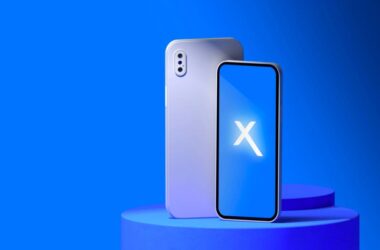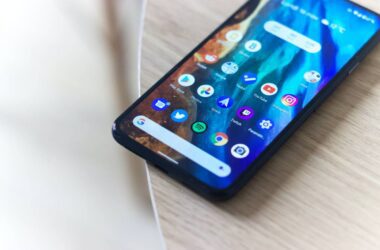In this Guide,
- Requirements and Compatibility
- Method 1: Using Recent Apps or Multitasking Button
- Method 2: Enabling Developer Options for Force Split-Screen
- Method 3: Using Device-Specific Gestures (Samsung, OnePlus, Xiaomi, and Others)
- Method 4: Using Third-Party Apps to Force Split Screen
- Common Split Screen Issues and Fixes
- Frequently Asked Questions [FAQs]
Split screen on Android lets you use two apps at the same time, side by side. It’s a built-in feature on most modern Android phones and tablets, and it helps when you want to multitask, like browsing the web while watching a video, or texting while checking your calendar.
In this guide, you’ll learn all the working methods to use split screen, whether your phone supports it by default or needs a small tweak. We’ll cover the easiest ways, device-specific tricks, and even third-party apps if needed. If split screen isn’t showing up or an app refuses to split, we’ll also walk you through fixes.
No tech jargon. Just simple steps that work.
Requirements and Compatibility
Not all Android phones support split screen, and not all apps can run in split screen mode. Before you try the methods, here’s what you need to check:
Basic Requirements
- Your phone must be running Android 7.0 or higher.
- Most phones from Samsung, OnePlus, Motorola, Xiaomi, and Pixel support split screen.
- Tablets usually offer better split-screen features than smaller phones.
App Compatibility
- Some apps don’t support split screen at all, especially games, camera apps, and secure apps like banking.
- If an app can’t run in split screen, you won’t see the split option next to it.
Things to Know
- Some brands hide or move the split-screen feature under different settings or gestures.
- Even if your phone supports it, your device’s custom Android skin (like MIUI, One UI, etc.) might affect how it works.
- You may need to enable split screen manually or through Developer Options on some phones.
If your phone and apps check out, you’re ready to use split screen. Let’s go over the first method.
Method 1: Using Recent Apps or Multitasking Button
The most direct way to use split screen on Android is through the Recent Apps view. This method works on nearly all modern Android phones with standard navigation or gesture controls.
How to Use:
- Open the first app you want to use.
- Tap the Recent Apps button or swipe up if you’re using gesture navigation.
- In the app carousel, locate the first app.
- Tap the app icon at the top of the preview window.
- Select “Split screen” or “Open in split screen view.”
- Your first app will be pinned to one half of the screen.
- Choose the second app from your recent apps or the app drawer.
What You Can Control:
- Adjust the space between apps using the black or gray divider.
- Rotate your device to switch from vertical to horizontal split, if supported.
- Exit split screen by dragging the divider to the edge of the screen or closing one of the apps.
This method is fast and reliable, provided both apps support split screen. If the “Split screen” option is missing for an app, it means the app has disabled multitasking support.
Method 2: Enabling Developer Options for Force Split-Screen
Some apps block split-screen mode by default, especially streaming services, games, or financial apps. However, Android includes an advanced setting in Developer Options that can override this behavior.
This method is useful if your device supports split screen, but certain apps don’t allow it.
How to Enable Force Split-Screen:
- Open Settings on your Android device.
- Scroll down and tap About phone.
- Find the Build number and tap it seven times to unlock Developer Options.
- Go back to the main Settings menu.
- Navigate to System > Developer options.
- Scroll down and find Force activities to be resizable.
- Enable this option, then restart your device.
Once enabled, this forces apps that normally don’t support split screen to behave as if they do.
Important Notes:
- This setting doesn’t guarantee perfect functionality. Some apps may still behave unpredictably or crash in split-screen mode.
- Enabling Developer Options is safe but should be used carefully. Avoid changing other settings unless you understand what they do.
- Restarting the phone is required for changes to take effect.
This method works well when you need to multitask with apps that otherwise block split-screen mode but can tolerate being resized.
Method 3: Using Device-Specific Gestures (Samsung, OnePlus, Xiaomi, and Others)
Some Android phone brands offer their own custom ways to enable split screen. These methods are often quicker and more refined than the standard Android approach. Here’s how split screen works on a few major brands.
Samsung (One UI)
Samsung devices make split screen easily accessible through a gesture or the Recents menu.
Here are the steps:
- Open the first app.
- Tap the Recents button.
- Tap the app icon and select Open in split screen view.
- Choose the second app from the list.
You can also enable Swipe for pop-up view and split screen from Settings > Advanced features > Labs. This allows for multitasking using simple gestures.
OnePlus (OxygenOS)
On most OnePlus devices:
- Open the first app.
- Go to Recents, tap the three-dot menu or app icon.
- Select Split screen.
- Pick the second app to run alongside.
Gesture navigation must be enabled for this feature on newer devices.
Xiaomi (MIUI)
Xiaomi’s MIUI includes a dedicated split-screen button.
- Tap the Recents button.
- Tap Split screen at the top.
- Drag one app to the upper area.
- Select the second app to occupy the lower half.
Note: Not all Xiaomi apps support split screen. If the feature is greyed out, try using Developer Options as covered earlier.
These brand-specific methods are often quicker and better integrated, especially when paired with other multitasking tools like floating windows or pop-up views.
Method 4: Using Third-Party Apps to Force Split Screen
If your phone doesn’t support native split screen or you want more control over how apps behave, third-party apps can help. These tools offer custom triggers, shortcuts, and automation features that go beyond the default Android options.
Recommended Apps:
| App Name | Description | Download |
|---|---|---|
| Split Screen Shortcut | This app adds a shortcut to quickly launch split-screen mode, even on devices where the option is hidden. It works with most Android versions and allows one-tap multitasking. | Download Now |
| Taskbar | Designed for power users, Taskbar adds a PC-like launcher to your screen. It includes support for split-screen launching and works especially well on tablets or large phones. | Download Now |
How to Use:
- Download and install the app from the Play Store.
- Grant any required accessibility or overlay permissions.
- Set your preferred split screen trigger (button, gesture, or shortcut).
- Launch the first app, trigger split screen, and select the second app.
Considerations:
- These apps may not work consistently across all devices or Android versions.
- Some require advanced permissions that could impact battery or security if misused.
- Always check user reviews and privacy policies before installing.
Third-party tools are useful when native options fall short, but they work best on devices with flexible multitasking support.
Common Split Screen Issues and Fixes
Split screen isn’t flawless on every Android device. If it’s not working the way you expect, here are the most common problems and how to solve them.
Split screen option doesn’t appear: If you don’t see the split-screen option when tapping on an app in the recent apps view, the app likely doesn’t support multitasking. Some apps block this feature completely. Try switching to a different app, like Chrome or YouTube, which are known to support it. You can also enable “Force activities to be resizable” in Developer Options, which can sometimes override this behavior.
Split screen is greyed out: When the split screen icon is visible but not clickable, it means the app has restricted this function. This is common with games, camera apps, or banking tools. There’s no official fix, but some users work around it by using third-party apps or accessing web versions of the same tools via Chrome.
Second app won’t open in split view: Sometimes the second app doesn’t load or open properly after activating split screen. Launching the app first, minimizing it, and then selecting it during the split-screen setup can help. Alternatively, use the app drawer instead of relying only on recent apps.
Can’t resize the split windows: On some devices, resizing doesn’t work with certain apps. Switching their position (top to bottom or vice versa) can solve it. If that fails, restarting your phone often clears temporary conflicts.
Apps crash or refresh during multitasking: This usually happens on low-memory devices or with heavy apps. To reduce the chance of crashes, close other background apps first. For better performance, use lightweight alternatives when possible.
If none of these solutions help, your phone may have limitations tied to its Android version or custom skin. Some features improve after software updates, so keeping your phone up to date is also worth trying.
Frequently Asked Questions [FAQs]
If your device doesn’t show the option, it may be due to your Android version, the app you’re using, or restrictions placed by the device manufacturer. Some phones disable the feature in specific modes like battery saver or guest mode.
No. Many apps, especially games, video players, and banking apps, block split-screen intentionally. If an app doesn’t support it, Android won’t offer the option unless forced via system settings.
Drag the divider line fully up or down (or left/right in landscape mode) until one app takes the full screen. On some phones, you can also tap the recent apps button and close one of the two running apps.
Most Android phones running version 7.0 or later support split screen. However, some budget models or heavily customized Android skins may remove or hide the feature.
Yes. You can still access split screen with gesture navigation, but the steps vary slightly. Instead of using buttons, you’ll need to swipe up and hold to access the recent apps view, then proceed with the split screen option.
This usually means the app isn’t optimized for multitasking or your device is low on memory. Restarting your phone, closing other background apps, or trying lighter alternatives can help improve performance.
Yes, running two apps at once uses more processing power and screen real estate, which can affect battery life. The impact depends on which apps you’re using and how resource-heavy they are.
Before You Leave
Get Our Prime Content Delivered to your Inbox for Free!! Join the Ever-Growing Community… Right Now.
Give this article a quick share,







